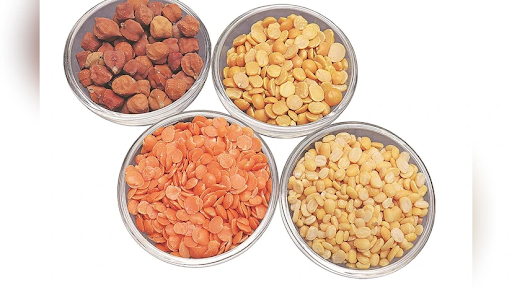





Copyright infringement not intended
Picture Courtesy: https://www.thehindu.com/news/national/andhra-pradesh/tirumala-tirupati-devasthanam-executive-officer-j-shyamala-rao-press-conference/article68663707.ece
The recent controversy over Tirumala Tirupati Devasthanam (TTD) and its ghee supplier has raised serious concerns regarding Food Adulteration.
Food adulteration is defined as adding or removing elements that alter the natural content and quality of food. This can result in lower quality and potential health risks for customers.
Types of Food Adulteration |
|
|
Intentional Adulteration |
Intentional adulteration is the planned addition of inferior ingredients to food products to increase quantity and profit. This type of adulteration is motivated by economic considerations and involves:
|
|
Unintentional Adulteration |
Unintentional adulteration is observed when food is produced, handled, or stored negligently, without sufficient facilities, or out of unawareness. This type of adulteration involves:
|
Producing and supplying to boost profit margins. Intense market competition may lead to enterprises taking shortcuts and using adulterants to offer lower costs.
Food safety rules are not always enforced strongly. Food adulteration continues due to insufficient resources and infrastructure for routine inspections and monitoring.
Many customers are unaware of the potential adulterants in their food and the health hazards that come with them. Similarly, some providers may not be entirely aware of the negative consequences of adulteration.
Common Adulterants |
|
|
Chemical Adulterants |
Artificial colouring and preservatives are used to improve food items' appearance and shelf life. However, they can lead to health problems such as allergies, hyperactivity in youngsters, and even cancer. Formalin, potassium bromate, lead, and mercury are some of the toxic chemicals utilised that can cause cancer, kidney damage, and neurological issues. |
|
Biological Adulterants |
Microbial contamination involves the presence of dangerous bacteria, viruses, or fungi in food. It can happen when food is improperly handled, stored, or processed. Salmonella, E. coli, and Listeria are common bacteria that can cause foodborne illness. |
|
Physical Adulterants |
Foreign Matter indicates the presence of non-food things such as dirt, stones, and debris. These contaminants can enter food at several phases of manufacture and handling. Combining lower-quality grains, spices, or other food ingredients with higher-quality ones to enhance volume and weight. |
Initially, various state laws governed food quality, but variations among states led to centralised legislation, the Prevention of Food Adulteration Act of 1954. However, the law was later repealed and replaced by the Food Safety and Standards Act 2006 (FSSA).
The Food Safety and Standards Act 2006 (FSSA) governs food safety in India. It integrated multiple food safety legislation and established the Food Safety and Standards Authority of India (FSSAI). The key provisions include:
Sections 273 and 272 of the Indian Penal Code (IPC) deal with food adulteration.
The Consumer Protection Act 2019 includes provisions to ensure food safety and protect consumers from contaminated food products.
Constitutional ProvisionsArticle 21 of the Indian constitution guarantees the right to life and personal liberty. This includes the right to safe and nutritious food. Recognising the importance of food safety and public health, the Constitution authorises the state to enact legislation to protect people's health and well-being. The Directive Principles of State Policy under Part IV of the Constitution establish values that the state is expected to follow when developing policies and legislation. Article 47 of the Directive Principles clearly states that the State must prioritise enhancing public health, nutrition, and living standards for its citizens. |
The globalisation of food trade has resulted in longer and more complex food supply chains. This makes it difficult to track the origins of food products and assure their safety throughout the manufacturing process. Contaminated food is easily transported across borders, making it difficult to control and regulate.
Climate change has various implications for food safety. Temperature and weather patterns can spread foodborne diseases and pests. Extreme weather can disrupt food production and supply chains, raising the risk of contamination.
The overuse of antibiotics in agriculture has resulted in the emergence of antimicrobial-resistant microorganisms. These bacteria can contaminate food and lead to difficult-to-treat diseases. This is a significant public health risk.
Implementing food safety measures requires significant expenditures in infrastructure, training, and technology. This limits the ability to adequately enforce food safety rules.
Food safety requires well-trained workers who understand the value of hygiene and correct food handling techniques. However, differences in education and literacy among food workers might make it challenging to maintain comparable standards.
New and emerging foodborne diseases are an ongoing concern for food safety. Keeping up with these diseases requires continuous research and development of food safety practices.
Governments should develop and implement comprehensive food safety standards and regulations, including restrictions on pollutants, pesticide residues, and food additives.
Conduct regular inspections and audits of food production and processing facilities to ensure compliance with safety regulations.
Implement traceability systems to track food products from farm to table, allowing for more rapid identification and resolution of contamination causes.
Educate farmers on the proper use of pesticides and fertilisers to reduce residues in food.
Encourage measures that promote soil health and limit the risk of contamination by soil-borne pathogens.
Implement Hazard Analysis and Critical Control Points (HACCP) systems in food processing facilities to identify and manage possible hazards.
Follow Good Manufacturing Practices (GMP) to ensure that food is prepared in a clean and sanitary environment.
Maintain stable temperature control throughout the supply chain to prevent the formation of dangerous microorganisms.
Set up effective surveillance mechanisms to detect and respond to foodborne disease outbreaks.
Create quick response procedures to address food safety incidents and prevent the spread of contamination.
Collaborate with international organisations, such as the World Health Organization and the Food and Agriculture Organization, to create and harmonise global food safety standards.
Participate in international networks to share knowledge about food safety hazards and effective practices.
India faces significant challenges in terms of food safety, such as widespread contamination, dangerous practices, and limited infrastructure. The Food Safety and Standards Authority of India (FSSAI) has made progress in building a regulatory framework, but enforcement and compliance require further improvement. Initiatives such as training programs and raising consumer knowledge are critical to guaranteeing safe food for all.
Must Read Articles:
Source:
|
PRACTICE QUESTION Q.Discuss the role of the Food Safety and Standards Authority of India (FSSAI) in ensuring food safety. What are the significant challenges it faces in implementing food safety regulations nationwide? (250 Words) |






© 2025 iasgyan. All right reserved